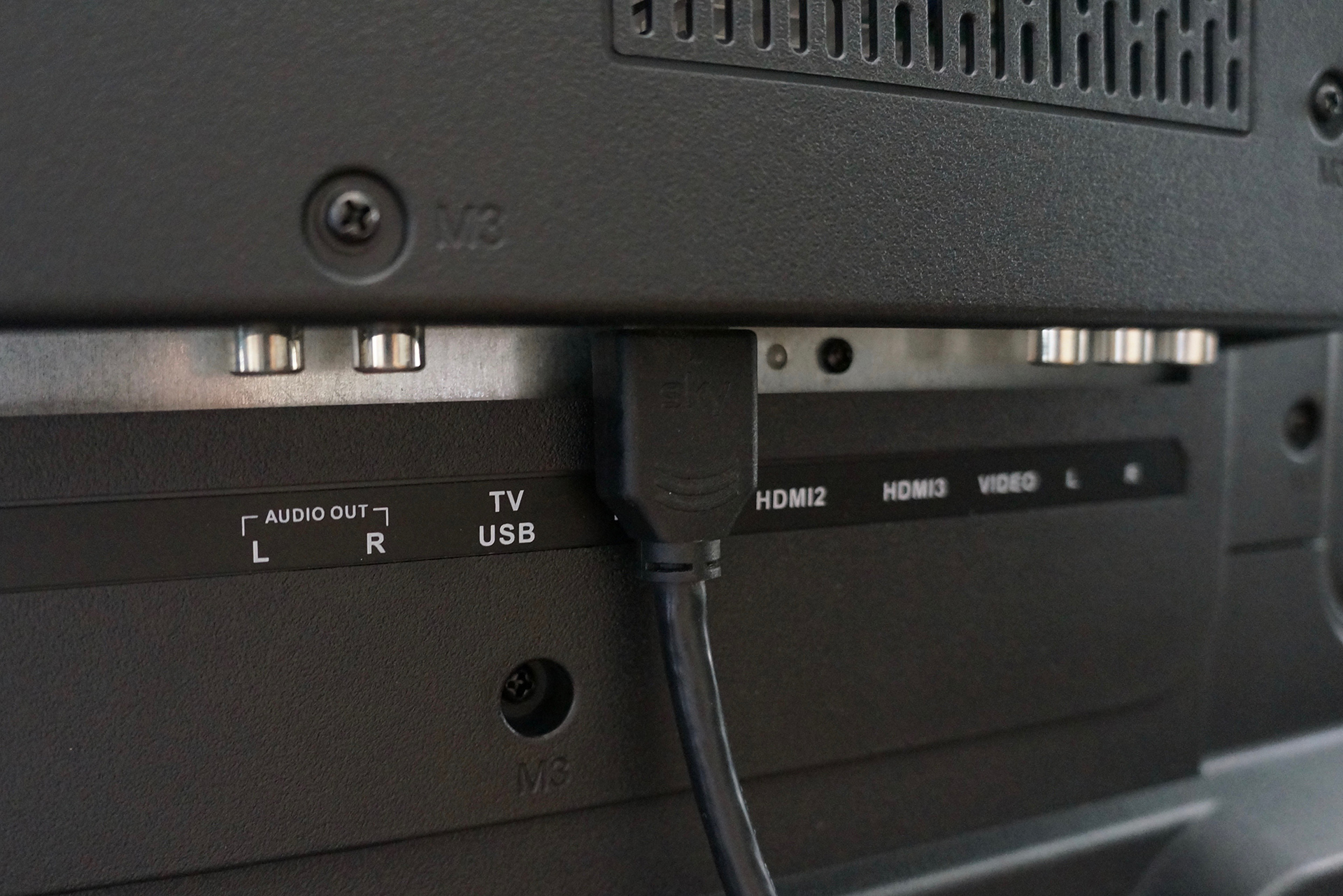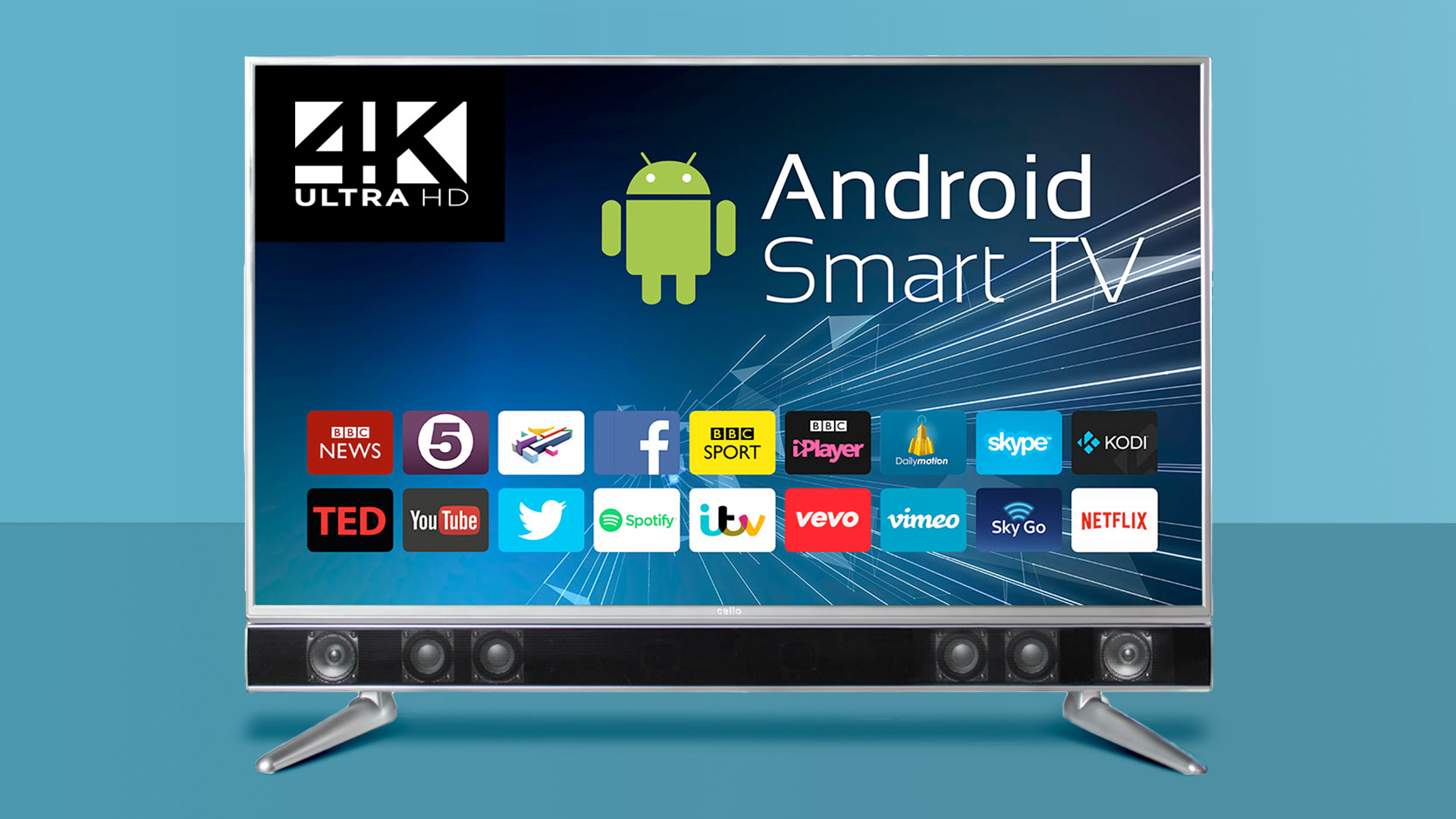TechRadar Verdict
This is 4K on a budget, with all the compromises you might expect. But if your budget is strict and you’re not fussed by HDR, it’s worth a look – just steer clear of the built-in smart TV system.
Pros
- +
Good value
- +
4K content is sharp and insightful
- +
Built-in soundbar adds clarity to dialogue
Cons
- -
Poor smart TV system
- -
Upscaling could do better
- -
Colors could be punchier
- -
Build quality so-so
Why you can trust TechRadar
We’ve seen enough budget 4K TVs to know buying one usually involves compromise. But there is always part of us intrigued to find the one set that breaks that mold.
On paper, the Cello P50ANSMT-4K Platinum looks promising. It costs £659.99 ($928, $AU1207), has a 50-inch screen, comes complete with built-in soundbar and has an Android smart TV system. So where’s the catch?
The lack of HDR is one of the big ones, and there are other holes besides that explain its price. But approach this set with your expectations lowered and you may find it scratches your 4K itch without upsetting your bank manager.
Design
The Cello P50ANSMT-4K Platinum won't win any awards for design. It’s not particularly slim, it’s made almost entirely from plastic and has feet that sit towards the outer edge of the screen, which can make it a pain to fit on regular TV stands.
That said, the bezels around the edges are pleasantly slim and once set up, its plastic design won’t be too obvious from your viewing position. It’s about what we’d expect for this kind of money.
The built-in soundbar makes quite the design statement too, sitting underneath the TV with six drivers just visible through the grille. It’s quite industrial looking so it won’t be for everyone, but we don’t mind it.

We do have a few niggles about build quality, though.
The screw holes for securing the feet are far too small for the screws included. We managed to secure one side with a bit of force, but the other side was impossible to fit tightly without using a drill.
This could be a one-off manufacturing issue, but it’s disappointing.
The Cello P50ANSMT-4K Platinum's back panel has three HDMI ports for plugging your kit into, alongside some legacy connections for older boxes, a microSD card slot for your own content and three USB ports.
Three HDMIs will be enough for humbler setups, but those with more equipment could find themselves swapping HDMI leads regularly. It’s worth thinking about your setup before you buy.

The Cello P50ANSMT-4K Platinum's remote is big and plasticky, but is easy enough to use. All Platinum range TVs come with the usually-optional Air Remote control as standard, which has mouse-like navigation.
You plug the included Bluetooth dongle into one of the USB ports and press the ‘mouse’ button to switch to it.
This has benefits when trying to navigate the fairly fiddly smart TV system, but isn’t as smooth as Samsung's or LG’s use of the technology. It makes entering passwords quicker, but won’t scroll when using Netflix for example.
You’ll find yourself switching backwards and forwards between Air Remote and the standard D-pad regularly, which can be quite a faff.
Quick hits section:
Screen sizes available: 32in (HD only), 43in (HD only), 50in, 55in, 65in | Tuner: Freeview HD | 4K: Yes | HDR: No | Panel technology: Edge-lit LCD | Smart TV: Yes, Android TV | Curved: No | Dimensions: H 731 x D 196mm x W 548mm | 3D: No | Inputs: 3 x HDMI, 3 x USB, 2 x composite, 1 x component, 1 x ethernet
Design TL;DR: A functional, largely plastic design, with a built-in soundbar and enough connectivity to suit a humble set up. Build quality leaves a little to be desired, though.

Smart TV
Cello claims to offer an Android smart TV system across its Platinum range of TVs. That’s technically true, but you don't get the one designed for TV use (as used by Sony and Philips).
Instead, the Cello P50ANSMT-4K Platinum has a fairly basic mobile version of the Android. This is not designed for use on TVs and therefore is pretty fiddly to use.
Click into the smart TV interface (which is a separate source, rather than the center of the TV experience like most), and you’ll be greeted with a grey screen with a scroll bar of greyed-out icons.
The selection isn’t bad, but you’ll first need to download whichever ones you want to use from the Play Store. Storage is fairly limited too, so you may need to consider a microSD card if you’re app happy, though we installed Netflix and BBC iPlayer with no issue.

Moving around an interface made for a touchscreen with a remote gets pretty frustrating rather quickly. The Air Remote does help (trying to get the cursor to land where you want without it is almost impossible), but it’s not without problems.
The Cello P50ANSMT-4K Platinum's Air Remote can only select items in the current view – you’ll have to switch back to the D-pad controls to scroll down through an interface as you can’t use both simultaneously.
Even if you have the patience of a saint, the smart TV system is further let down by a lack of 4K versions of Netflix and Amazon Video. For a 4K TV, this seems a big oversight.
Our advice? Invest in a 4K streaming dongle, such as the Amazon Fire TV 4K, Chromecast Ultra or the Roku Streaming Stick+ and ignore the Cello’s smart TV system entirely. It’s just not worth the hassle.
Smart TV TL;DR: Buy a streaming stick and avoid the smart TV system altogether – its clunky, difficult to use and doesn’t offer the 4K versions of key apps.

Performance
One of the first things you’ll want to do after getting the Cello P50ANSMT-4K Platinum out of the box is dive into the picture settings. The TV will walk you through a more general set up to get it onto your network and program any Freeview channels, but the standard picture settings do need a bit of work to help it look its best.
The selection of options is not huge, but you do get basics such as contrast, brightness, colour, sharpness and colour mode. To have any control over them you’ll need to select Personal mode – there are three other presets but they aren’t that good.
We switched colour tone straight to warm for the most accurate tones, and then used the THX app to fine tune the rest, which mostly involves knocking the presets down a little.
Once in place, the Cello P50ANSMT-4K Platinum's colour balance is much better. Skin tones have more warmth and blown highlights, noticeable in the standard mode, are reduced.

That said, colours could still be punchier – they’re a little muted compared with more talented sets, and lack subtlety too. The Cello P50ANSMT-4K Platinum isn’t overly bright either (there’s no HDR here), which means contrast isn’t as impressive as you’ll find elsewhere. Don’t be tempted to push the brightness to help – the backlight tis not particularly strong, which can’t be solved by processing.
What does help in this regard is that blacks are actually very deep for the price, with no blooming of note and no uneven backlighting on our sample either. You won’t get the most information from darker scenes, as the Cello P50ANSMT-4K Platinum aims for depth over detail. But it does help to counter weaker highlights that can struggle to make an impact.
Of course, one of the big draws of the Cello P50ANSMT-4K Platinum is 4K resolution. The more 4K content you can feed it, the better.
We used a Chromecast Ultra to watch Better Caul Saul in 4K on Netflix, and the picture was clean, detailed and insightful. However, this good performance shows just how so-so the Cello P50ANSMT-4K Platinum’s upscaler is.
For the majority of the time when watching standard TV, you’re going to watch full HD quality programming or worse. And while watchable, the HD content lacks the amount of detail we’re used to seeing on a full HD channel from a 4K TV.
There’s an ever so slight grain to HD images that prevents them from looking as detailed as we’d like – particularly those with a lot of detail to portray. We notice close up images of faces, for example, fare a little better than wide landscape shots in this regard.
At least outlines remain sharp, though.
Switch to an SD channel and you’ll find them looking very soft indeed. You’ll want to stick with HD content and above to keep this TV looking its best.

One thing to note is there are next to no extra processing modes outside the standard colour controls, which means you don’t get things such as motion processing to help keep moving scenes looking smooth.
Sometimes these controls can do more harm than good though, and largely motion on the Cello P50ANSMT-4K Platinum seems relatively stable. However, we did pick up some slight jerkiness during a film’s panning scenes that better motion processing would help counteract.
Also, for anyone used to tech doing what they want, when they want it, the processor inside the Cello P50ANSMT-4K Platinum isn’t the most powerful we’ve come across. Just turning on or off is subject to a slight delay. It’s far from a deal breaker, but something for those short on patience to bear in mind.
Performance TL;DR: A sharp, watchable picture, but that requires HD content or above to make the most of it. Colours could be punchier and whites a little brighter, but it’s a balanced enjoyable picture for the price.
Sound
The built-in soundbar on the Cello P50ANSMT-4K Platinum is much better than that of the smaller P32ANSMT.
The six-driver array does a great job at projecting dialogue into the room, giving it more detail and body in the process.
It proves most successful with dialogue, though. The speaker still doesn’t have the weight to really create the impact we’d like in big action scenes, but there is, at least, much more power there than a standard TV speaker setup offers.
It’ll certainly help improve your TV sound experience then – making it louder, clearer and more expressive – just don’t expect anything too cinematic. For that, you’re still going to have to invest in a standalone sound solution.

Other TVs to consider
We see very few 50-inch TVs in our testing rooms these days. 55-inch is the more popular screen size now.
If your living room can manage the extra inches, you’ll find a lot of competition from the big-name manufacturers, with many not far off this price too.
While we’re still waiting on a lot of 2018 sets to arrive, something like Sony’s 2017 KD55XE850 is a superb budget-conscious set. It offers HDR support too.
Like the Cello, it not the brightest or most vibrant TV out there, but there are few TVs we’ve seen in recent times that have balanced price, contrast, brightness and color quite so effectively.
It can’t rival the Cello P50ANSMT-4K Platinum’s sub £700 price, nor its built-in soundbar, but picture quality is arguably better if you can stretch to its £880 price.

Verdict
As is so often the case at this end of the market, the Cello P50ANSMT-4K requires those with high hopes of premium quality at a budget price to manage their expectations.
There are some inevitable disappointments here. Build quality on our sample is not brilliant, the smart TV system is best avoided entirely and picture quality has its issues too.
It’s also worth thinking hard about whether a 4K TV without HDR is really worth investing in, as the two technologies tend to go hand-in-hand.
However, if your budget really won’t stretch any further than this, the 4K performance here is actually pretty decent, with sharp outlines, plenty of detail and lots of insight.
We would still like colours to be a bit punchier, upscaling to be tighter and brightness to be better, but these are all things you’d get by spending more money.
At this price, the Cello P50ANSMT-4K Platinum ticks a lot of boxes for those wanting 4K on a budget. If you’re prepared to accept its shortcomings, this could be worthy of consideration.
Verity is a freelance technology journalist, with previous on-staff roles at What Hi-Fi?, Stuff, Pocket-lint and MSN.
Having chalked up more than 15 years in the industry, she has covered the highs and lows across the breadth of consumer tech, sometimes travelling to the other side of the world to do so. With a specialism in audio and TV, however, it means she's managed to spend a lot of time watching films and listening to music in the name of "work".
You'll occasionally catch her on BBC Radio commenting on the latest tech news stories, and always find her in the living room, tweaking terrible TV settings at parties.
